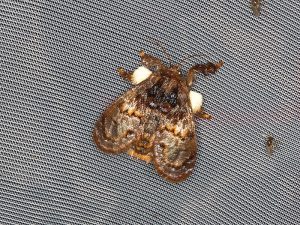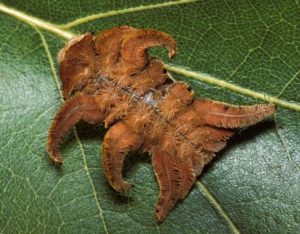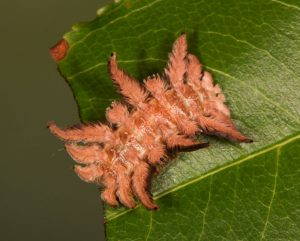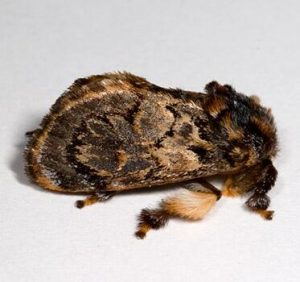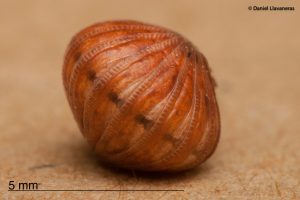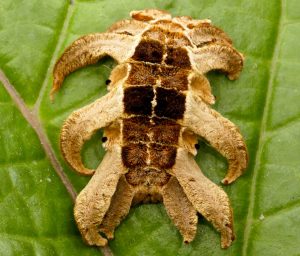Hag Moth(Phobetron pithecium)
The hag moth of the Limacodidae family is indigenous to the eastern parts of North America. Its name is a result of the shabby, brown hair covering their body. During their larva stage, they are even referred to as a slug monkey.
Description and Identification
Caterpillar
The caterpillar has a unique furry appearance, closely resembling a tarantula. One of its prominent features is the six pairs of projections it has on both sides of its body. Three of the curly appendages protruding from each side are long, while the other three are short. Though the projections look like legs, they are not, as their real legs lie within their body. The larva has dense, brown hair all over its body and reaches a length of about 2.5 cm.
Pupa
The pupa remains enclosed within a silken cocoon, looking like a cup, with a circular escape hatch.
Adult Moth
Sexual Dimorphism: Present
Color and Appearance: When the wings are opened they are mottled brown, translucent and bright in males, and opaque and a little dull in females. When the wings are closed, the pattern does not change much, though the translucence may not be prominently visible.
Females are bigger than males, also having yellow puffs of hair on their legs.
Average wingspan: 3 cm
Flight pattern: Not recorded
Season: May to September
Quick Facts
| Other Names | Slug monkey (for the larva) |
| Distribution | Eastern parts of North America |
| Habitat | Orchards, fields, forests, and woods |
| Predators | Bats, and wasps |
| Lifespan of Adults | Not recorded |
| Host plants | Ash, cherry, birch, cedar, apple, dogwood, chestnut, oak, walnut, willow, hickory, and persimmon |
| Adult diet | Nectar, mostly of their host plants |
Did You Know
- The male and female hag moth mimics a wasp and a bee, respectively, which helps them put up a strong defense against their predators.
- Toxin glands are known to be located on the hag moth’s spines, which releases toxins upon contact, irritating the human skin. However, entomologist David. L Wagner tested the sting of this moth on himself but did not experience any harmful reactions.
Scientific Classification
- Family: Limacodidae
- Genus: Phobetron
- Scientific Name: Phobetron pithecium

